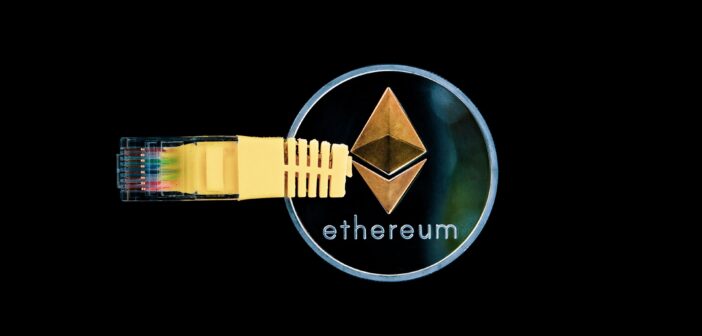Vladyslav Zadorozhniy occasionally writes for Hackernoon and other media. He kindly agreed to share this original piece with our readers.
The platform update, the crazy hype around it, and the potential future of Ethereum.
What Changes Will Proof-of-Stake Technology Bring to the Ethereum Platform?
After six years of prepping, “The Merge,” a major update to the Ethereum cryptocurrency platform, was finally completed on September 15, 2022.
Like Bitcoin, ether approved new transactions on the blockchain through a consensus mechanism called Proof-of-Work (PoW), whereby miners solved complex mathematical problems using massive amounts of computing power and were rewarded in cryptocurrency.
This approach consumes a lot of energy. It also created scaling problems for Ethereum: network congestion led to higher fees and slower processing speeds, making the network too expensive for smaller transactions and making it difficult to scale large ones.
Initially, on December 1, 2020, Ethereum launched a separate Beacon Chain for proof of stake. It runs in parallel with the main Ethereum blockchain. And on September 6, 2022, the Ethereum community released the Bellatrix update to begin the “merge” process. With this update, the community decided to replace the PoW chain with PoS after reaching a certain value of the total terminal difficulty (TTD) on the original Ethereum blockchain.
Proof-of-Stake (PoS), on the other hand, requires validators to place a bet — this is how they get a chance to be selected to approve transactions and receive rewards. The higher the validator’s bid, the greater the chance of being rewarded. However, all Ethereum that is wagered will earn interest. This works similarly to buying stocks or bonds without the computation overhead.
By reducing the required participation overhead, the shift to proof-of-stake could help Ethereum distribute transactions to a wider and more diverse set of validators and users. However, the power dynamics are still a concern. The minimum amount you can stake to become a validator is 32 ETH — about $51,000 USD.
Due to the fact that the Ethereum blockchain consumes much less electricity, many developers will focus on staking contracts to reduce transaction costs and ensure scalability.
Pros of “The Merge”
There are two main benefits of this update: greater environmental friendliness and democracy.
PoS makes Ethereum eco-friendly
Bitcoin and other cryptocurrencies have been heavily criticized due to the energy-intensive nature of Proof-of-Work and how it contributes to environmental pollution. However, Ethereum is now considered a “green” technology.
Proof-of-Stake removes entry barriers
Proof-of-Stake provides a more sustainable alternative to achieve inclusive validator distribution. Users only need to hold Ethereum as collateral. In addition, multiple holders can pool their funds through staking pools to become validators, participate in transaction processing, and receive rewards.
Cons of “The Merge”
However, updating Ethereum has its risks. Let’s consider two main ones.
Transaction speed remains the same
Ethereum has been actively criticized for various transaction problems. There was congestion in the network, due to which transaction confirmation takes longer than usual. This was particularly evident during the ICO boom, when investors tried to buy tokens in advance. Proof-of-Stake was supposed to speed this up, but there has been no significant change. Transactions take the same amount of time to process.
Disconnection of the miner community
Since the PoS system effectively “cuts off the air” to miners, this crypto community is falling apart. Major players are leaving the pool and are unlikely to return to the updated system. The commission has practically not changed, and getting the desired tokens is now much more difficult than it was with the PoW system.
Some ardent supporters of Ethereum 1.0 plan to continue to adhere to the Proof-of-Work system. One popular miner said he would “hard fork” the network by separating the code to keep a separate chain (as some did in 2016 to preserve the previous incarnation of Ethereum). The move is unlikely to have much impact on the ecosystem unless major platforms recognize it. OpenSea, the largest marketplace for NFTs, has stated that it would only support Ethereum with Proof-of-Stake.
The future of Ethereum
The clear thing is that the global trend will not change. Although the blockchain is considered to be decentralized, by the analysis of the state of the Ethereum network and the further steps of the founder, it can be argued that it is moving towards centralization.
Fears of centralization became more predictable in August 2022, after US government sanctions raised the issue of validators censoring transactions coming from certain blockchain addresses. Some US validators have announced that they will start ignoring transactions from the sanctioned Tornado Cash mixing program, making it harder to get into the decentralized Ethereum ledger.
“ETH is now created exclusively digitally according to set parameters under the control of its central planners,” Max Gagliardi, co-founder of Ancova, tweeted.
Regardless of what happens next, Ethereum’s long-awaited move to Proof-of-Stake has brought a new jolt of enthusiasm and technical capability to an industry that has been suppressed by persistent reports of fraud and legal investigations.

Vladyslav Zadorozhniy is the co-founder of CryptoCrew, the largest educational crypto community in Ukraine. The team of enthusiasts explains to users that cryptocurrencies are not about “easy and fast money”, but about relevant knowledge, skills, and abilities. Crypto Crew has almost 120k active subscribers in their Telegram group. Vladyslav is the main speaker on the community’s YouTube channel, which has more than 25k subscribers.





